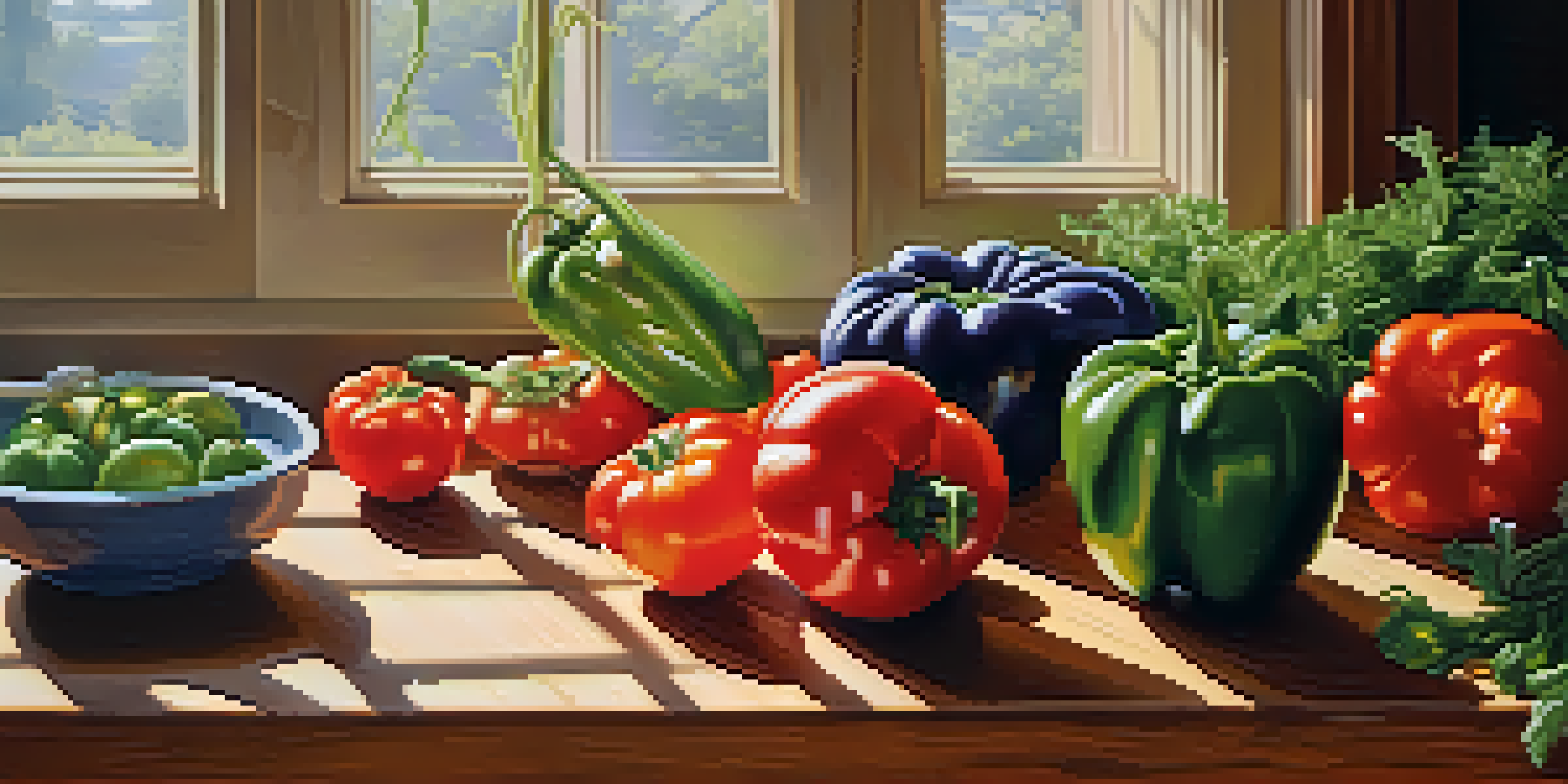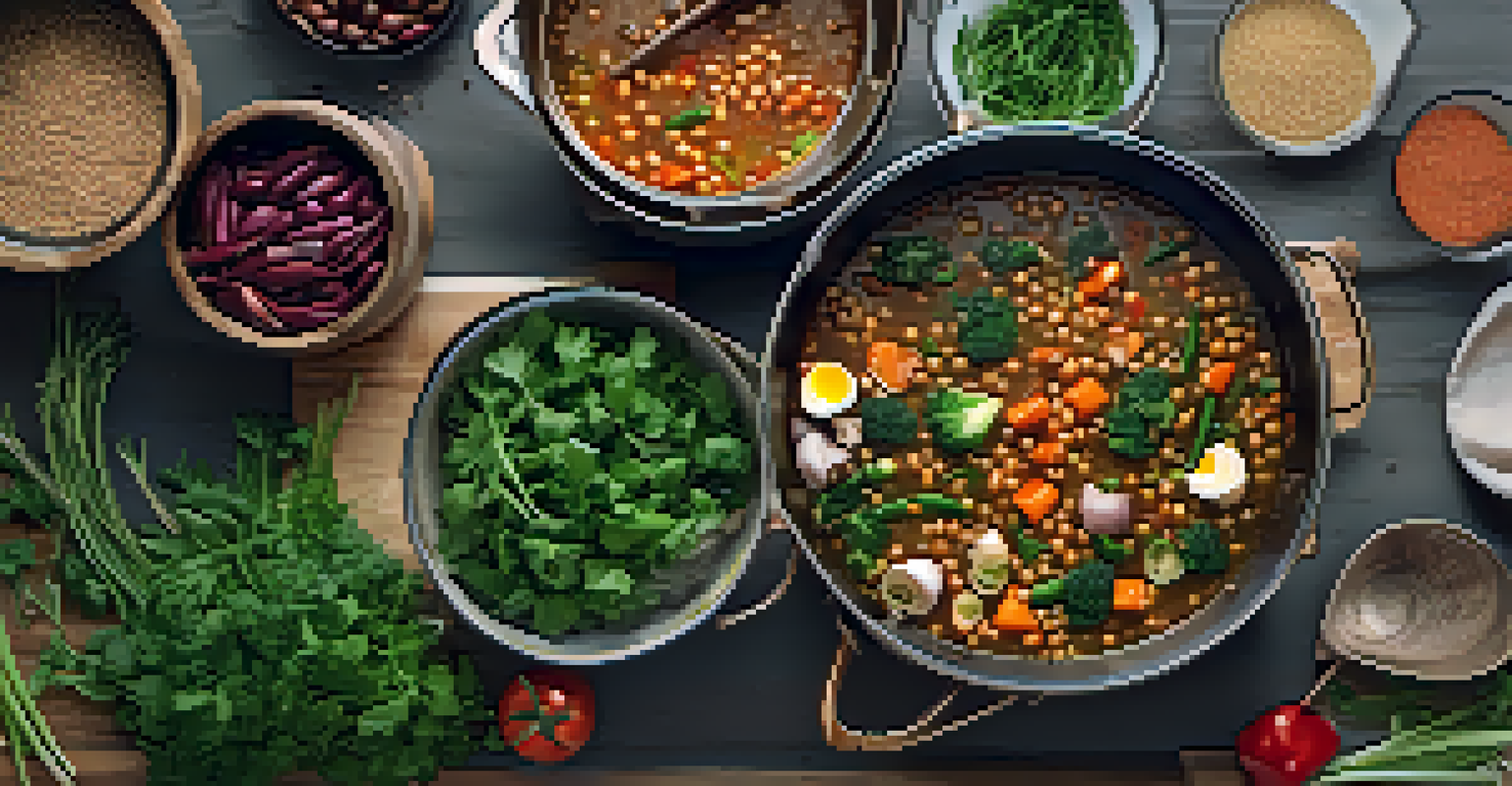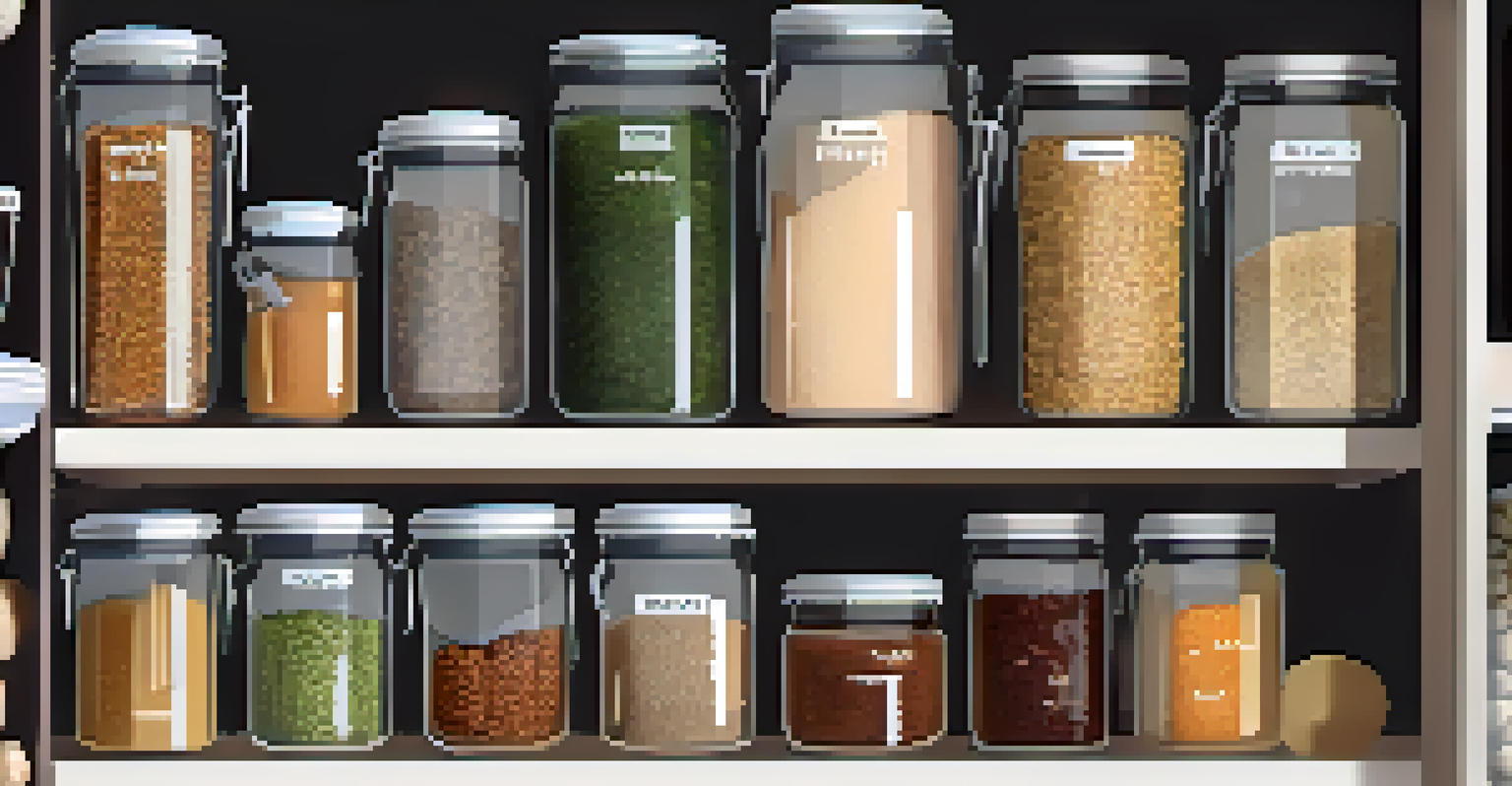Vegan Meal Prep: Strategies to Cut Down on Food Waste

Understanding Food Waste in Vegan Meal Prep
Food waste is a significant issue in our world today, and it can be especially pronounced when it comes to meal prep. For vegans, this can mean leftover produce, grains, or protein sources that end up in the trash. Understanding how food waste occurs in meal prep can help us make better choices and use our ingredients wisely.
Waste is a design flaw.
When we buy more than we need or allow items to spoil in the fridge, we contribute to this growing problem. According to studies, a large percentage of food waste happens at home, which means we have the power to change our habits. By recognizing the patterns that lead to waste, we can begin to implement strategies that not only benefit the environment but also our wallets.
Ultimately, reducing food waste in vegan meal prep requires awareness and intentionality. By being mindful of our purchasing and cooking habits, we can ensure that every ingredient contributes to a delicious meal rather than finding its way to the landfill.
Plan Your Meals and Shop Smartly
One of the best strategies for reducing food waste is effective meal planning. By deciding what meals you want to prepare for the week, you can create a shopping list that eliminates unnecessary purchases. This not only helps to keep your kitchen organized but also ensures that you use fresh ingredients before they spoil.

When shopping, consider buying in bulk for items that have a longer shelf life, like grains and legumes. This can reduce packaging waste and often save you money. Additionally, choosing seasonal produce can ensure that you’re getting the freshest items, which are less likely to go bad quickly.
Reduce Waste with Meal Planning
Effective meal planning helps avoid unnecessary purchases and ensures ingredients are used before they spoil.
Regularly reviewing your pantry and fridge before shopping can also help avoid duplicate purchases. By keeping track of what you already have, you can creatively incorporate those ingredients into your meals, ensuring nothing is wasted.
Use Leftovers Creatively
Leftovers are an incredible resource when it comes to minimizing waste in vegan meal prep. Rather than letting uneaten portions sit in the fridge, think about how you can reinvent them into new dishes. For instance, roasted vegetables can easily transform into a hearty soup or a colorful salad.
The greatest threat to our planet is the belief that someone else will save it.
Another fun way to use leftovers is to create grain bowls or wraps. By combining leftover grains, proteins, and veggies, you can create a nutritious meal that feels fresh and exciting. This not only reduces waste but also keeps your meal prep interesting and varied.
Don't underestimate the power of freezing leftovers, either. If you know you won't eat a meal within a few days, freezing it can extend its life significantly. Just be sure to label your frozen meals so you remember what’s inside and can enjoy them later!
Incorporate Imperfect Produce
Imperfect produce, or 'ugly' fruits and vegetables, are often overlooked in grocery stores but can be a fantastic addition to your meal prep. These items may have minor blemishes or irregular shapes, yet they are just as nutritious and delicious as their pristine counterparts. By choosing imperfect produce, you're not only saving money but also helping reduce food waste.
Many farmers' markets and grocery stores now offer discounts on imperfect produce, making it an economical choice as well. Plus, using these items can challenge your creativity in the kitchen, leading to unique and flavorful meals. Embracing these 'flawed' ingredients can be a fun and satisfying way to support sustainability.
Get Creative with Leftovers
Transforming leftovers into new dishes can minimize waste and keep your meals exciting.
When planning meals, think about how to incorporate these items into your recipes. Whether blending them into smoothies, roasting them, or using them in soups, you'll minimize waste while giving these misunderstood fruits and veggies a second chance.
Store Your Food Properly
Proper food storage is crucial for prolonging the life of your ingredients and minimizing waste. Different fruits and vegetables have specific storage needs; for example, some thrive in the fridge, while others do better at room temperature. Familiarizing yourself with these needs can help keep your produce fresher for longer.
Investing in reusable storage containers can also make a difference. Airtight containers not only keep your food fresh but also help you organize your fridge. Clear containers allow you to see what's inside at a glance, reducing the likelihood of forgetting about items and letting them spoil.
Lastly, consider using a FIFO (First In, First Out) system in your pantry and fridge. This means placing newer items behind older ones to ensure that you use the older items first, which can significantly cut down on waste.
Embrace One-Pot and Batch Cooking
One-pot meals and batch cooking are fantastic strategies that can save you time while minimizing waste. By cooking large quantities of food at once, you can create multiple meals that use the same ingredients, reducing the chances of leftover items going bad. Think soups, stews, or casseroles that can be easily portioned and frozen.
These cooking methods allow for flexibility as well. If you have a variety of veggies or grains that need to be used, you can throw them into a pot and let them simmer together. This not only saves time but also creates a delicious meal that utilizes everything you have on hand.
Store Food Properly for Longevity
Proper food storage techniques can significantly extend the life of your ingredients and reduce waste.
Plus, one-pot meals often mean less cleanup, which is always a win in the kitchen! Embracing these cooking styles can make meal prep more enjoyable and efficient, all while keeping waste at bay.
Educate Yourself and Your Family
Education is a powerful tool in the fight against food waste. By learning about how to reduce waste, you can make more informed choices when it comes to your meal prep. This knowledge can be shared with family and friends, creating a ripple effect that encourages more sustainable practices in your community.
Consider involving your family in the meal prep process, too. Teaching kids about food waste and how to cook can instill valuable skills that will benefit them for a lifetime. Plus, cooking together can be a fun bonding activity and can help everyone appreciate the effort that goes into preparing meals.

Finally, staying informed about food waste statistics and solutions can keep the topic relevant and encourage ongoing conversations. The more we talk about it, the more likely we are to change our habits and make a positive impact.